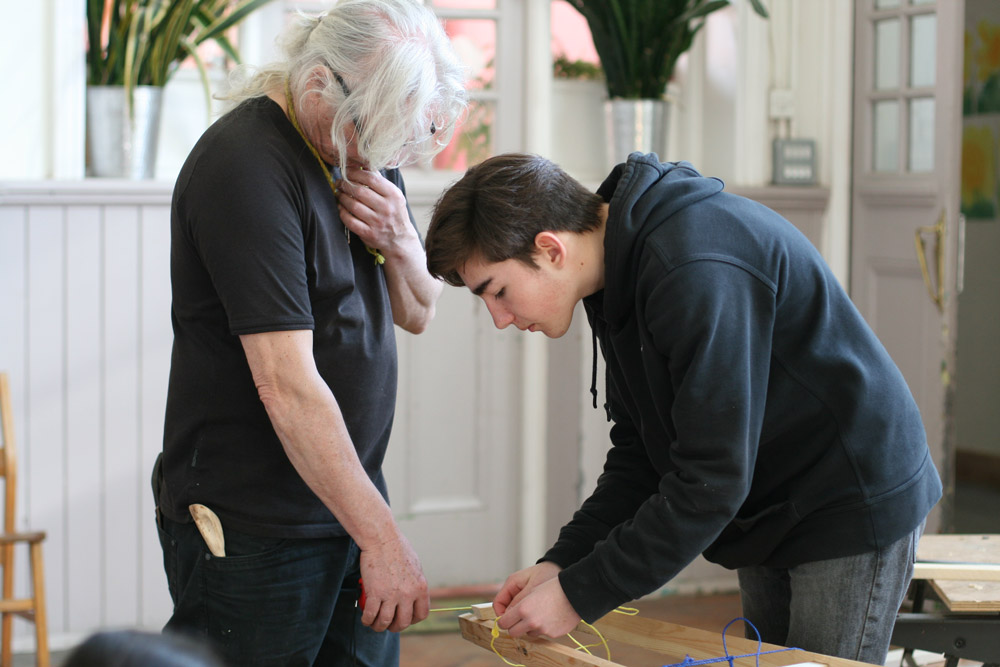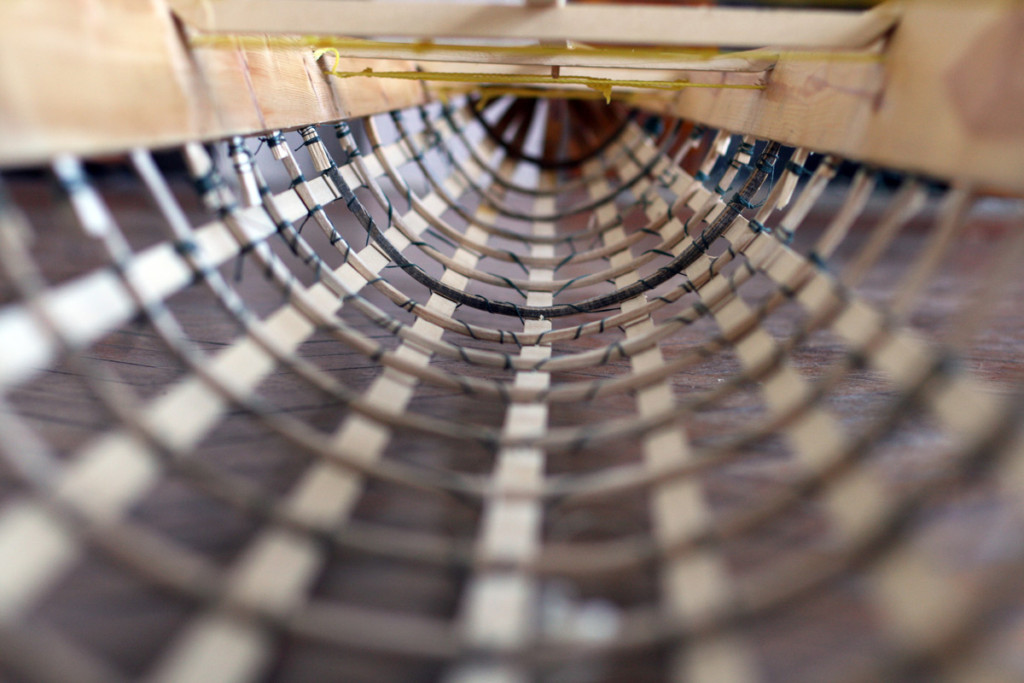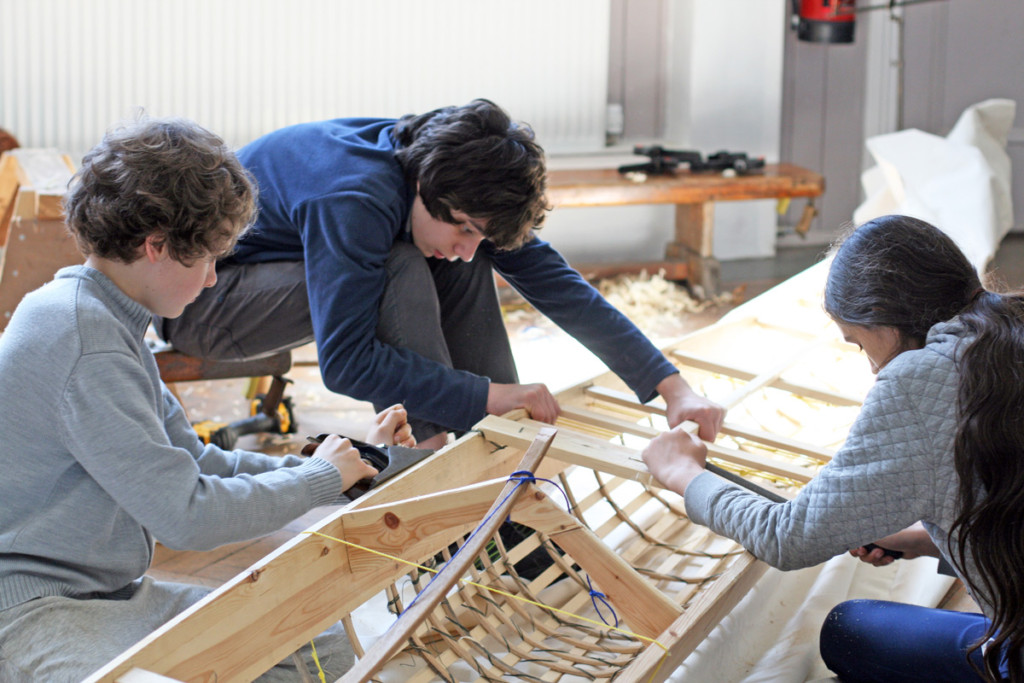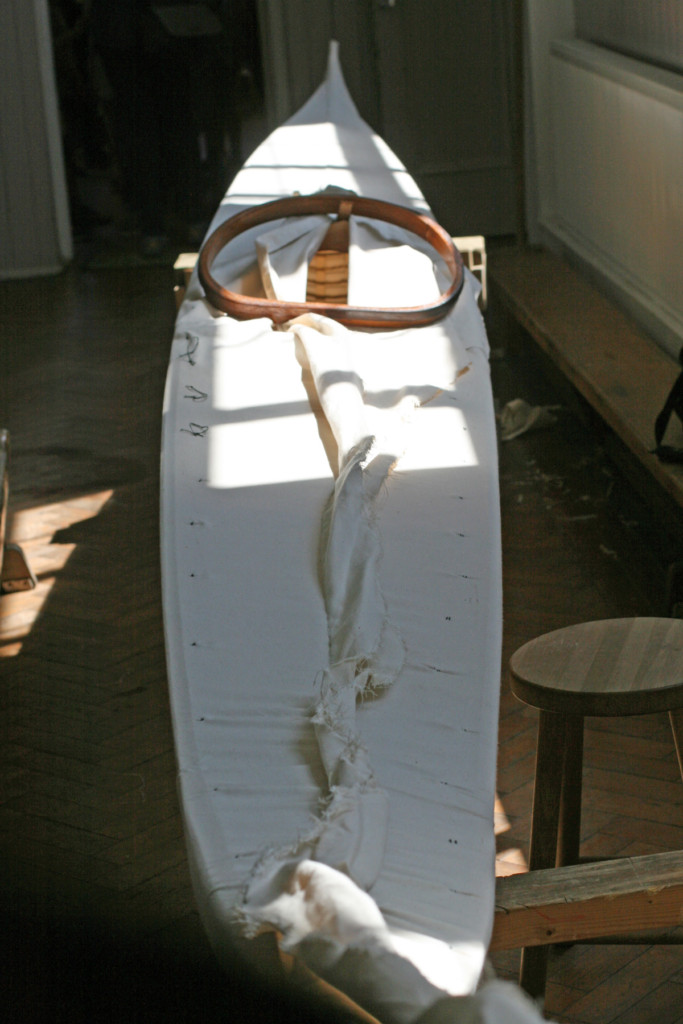Class 7/8 Kayak Building
16 May 2017
Class 7/8 have made a 22 foot, full-size reconstruction of an 1823 Inuit qajaq (kayak) in a wonderful living research project. This hugely exciting project has connected learning across all areas of our broad curriculum – from maths and the science of buoyancy, to history, ethnography, craft and literacy. Find our more below…
A Living Research Project
Mike Morgan, our Woodwork Teacher, has been leading the project. The Class have finished skinning and painting the qajaq in Woodwork lessons and will launch it on the River Taff on the last day of term (Friday 14 July), before taking it on further sea trials.
The original qajaq is typical of those from Igloolik Island in Foxe Basin, Canada, and is part of the British Museum collection. Mike partnered with the British Museum to draw and survey the boat which is kept in their vaults in a dusty lock-up in London. Renowned Canadian ethnographer, Eugene Arima, has been interested ever since, and has been asking Mike to make a reconstruction using original techniques.
A reconstruction of the boat from Mike’s survey drawings was made for the Cannes award-winning film Atanarjurat: The Fast Runner, by John McDonald of Igloolik. In the film the main character can be seen paddling in it to the beach.
Class 7/8’s is using close-to original construction techniques (though using 12 oz cotton duck canvas rather than the craft’s original 13 seal skins), so it is a fantastic living research project.
The qajaq would have been the absolute cutting-edge technology of its time, and the process of reconstruction has seen Mike and the Class develop a growing appreciation of the technical knowledge and precision skills entailed.
The original qajaq was collected on the British Naval Northwest Passage Expedition 1821-1823 led by Arctic explorer, Sir William Edward Parry. The crews wintered in 1822 at Igloolik Island when the the Inuit encountered Europeans, possibly for the first time. The expedition uncovered a little known sector of the Arctic and provided them with a wealth of information on the culture and way of life of the Inuit.
The ship’s carpenter was reported to have copied the best kayaks in the area and made the frame, being helped by native women to skin the craft with seal skins. The attraction of this elegant craft, cutting across the icy, Arctic waters, was clearly as inspiring to a 19th century craftsman as it is to a 21st century woodworker.
Mike has a catalogue of expedition sketches, his survey drawings and photographs, which the Class have been working from. Combining this with Mike’s extensive knowledge of qajaq building and Inuit culture has added rich layers of meaning and a real sense of human connection to this unique, experiential learning project.
Consider a Steiner Education for your child and contact a Steiner School near you today. Ready to learn more? Come and find out whether Cardiff Steiner School is right for your child.






























































